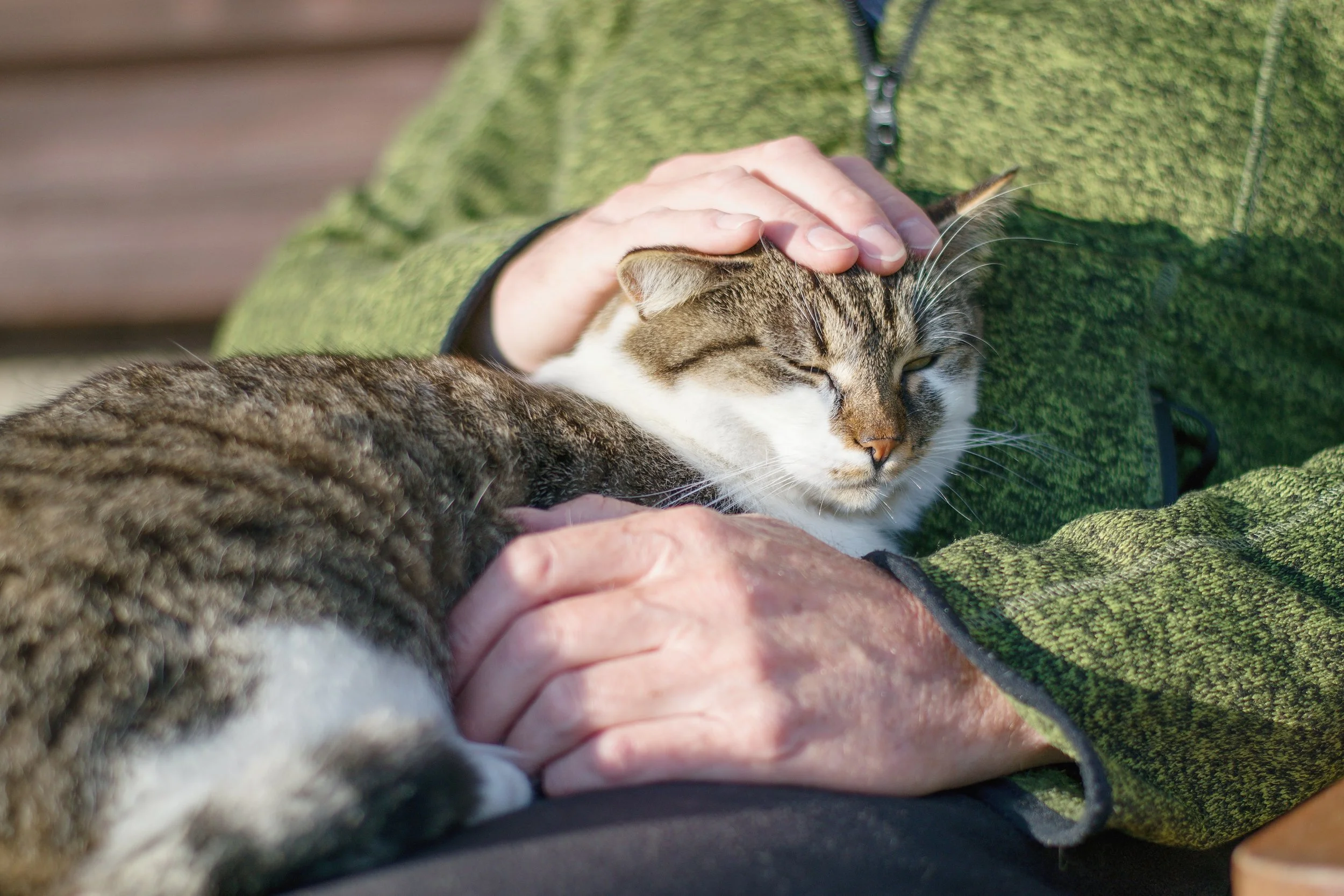Arthritis in Aging Cats: Signs, Symptoms, and Seasonal Care Tips
Much like us, cats don’t just get older, they get wiser – and a little creaky (and cranky)! Also similarly, over time, they develop things like arthritis, other degenerative conditions, stiffness and pain, resulting in reduced mobility. While our kitties might specialize in hiding discomfort, there are some subtle signs we can use to determine if they need some help – especially as the weather cools off.
What Exactly Is Arthritis in Cats?
Arthritis, or osteoarthritis, is the gradual breakdown of cartilage in the joints. Sadly, this cushioning tissue normally helps bones move smoothly, and when it wears away, movement becomes painful, joints swell, and you, or your cat, start to lose flexibility.
Arthritis in cats is a lot more common than many realize. Studies have shown that up to 90% of cats over 12 years old show some signs of arthritis, even if they still act playful and spry.
How to Spot the Subtle Signs
As a survival mechanism, cats have learned to never show weakness if they can help it. They rarely cry out or limp, so you have to watch for different clues:
· Hesitating to jump onto beds, counters, or cat trees
· Sleeping more or avoiding their favourite high perches
· Messier grooming habits (especially around the back and hind legs)
· Reluctance to use the litter box, as climbing in may be difficult
· Changes in mood, such as irritability, hiding, or reduced playfulness
Why Cold Weather Makes It Worse
Just like people, cats with arthritis often feel more stiffness during cooler, damp months. The drop in barometric pressure and temperature causes joints to ache and muscles to tense up. An arthritic cat might suddenly prefer spending all day in bed versus running around the living room.
As a doting cat owner, you can take advantage of this time of year to make your home extra comfortable for your kitty.
How to Keep Your Arthritic Kitty Comfortable
Create Warm, Accessible Resting Spots – Provide soft, supportive bedding in spots that don’t require jumping. Heated pet beds, self-warming mats, or even a folded fleece blanket in a low place can make a big difference.
Maintain a Healthy Weight – Excess weight puts extra stress on joints. A healthy, balanced diet tailored to senior cats helps maintain muscle tone without packing on pounds.
Ask Your Vet About Medication and Joint Supplements – If your cat is suffering, medication like Gabapentin can help them manage their pain and discomfort, while supplements like Glucosamine, chondroitin, and omega-3 fatty acids can help strengthen their joints*.
*Always check with your vet before giving your cat medication or supplements. They can recommend safe, cat-specific formulas.
Encourage Gentle Movement – Short, gentle play sessions help keep joints lubricated and muscles strong. Wand toys or laser pointers used in moderation are great for light exercise.
Make Everyday Tasks Easier – By helping your cat get around the house more easily, you can alleviate a lot of the difficulties of their daily life.
Consider:
· Low-entry litter boxes
· Steps or ramps leading to favourite spots
· Non-slip mats on slick floors
· Small adjustments can make your cat’s world much more comfortable.
When to See the Vet
If you notice persistent stiffness, reluctance to move, or personality changes, schedule a vet visit. Your veterinarian can investigate the source of their struggles through exams and X-rays. They might recommend pain relief or anti-inflammatory medication, which can really make the difference for a cat suffering from arthritis pain. Thankfully, we have access to modern treatments that can greatly improve your cat’s comfort and quality of life.

